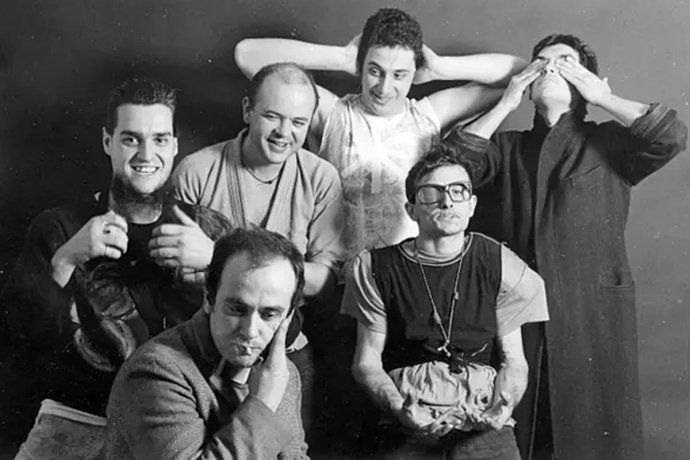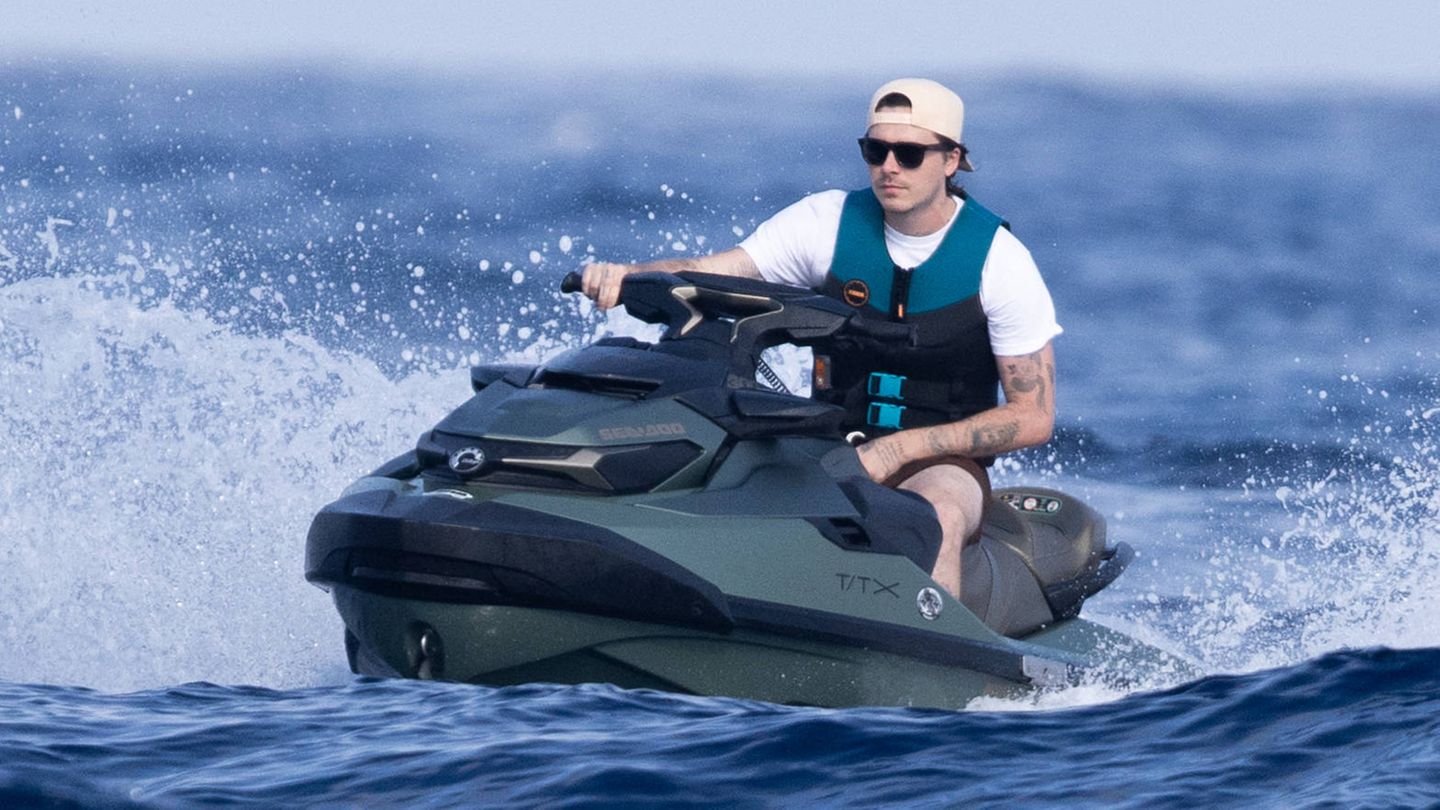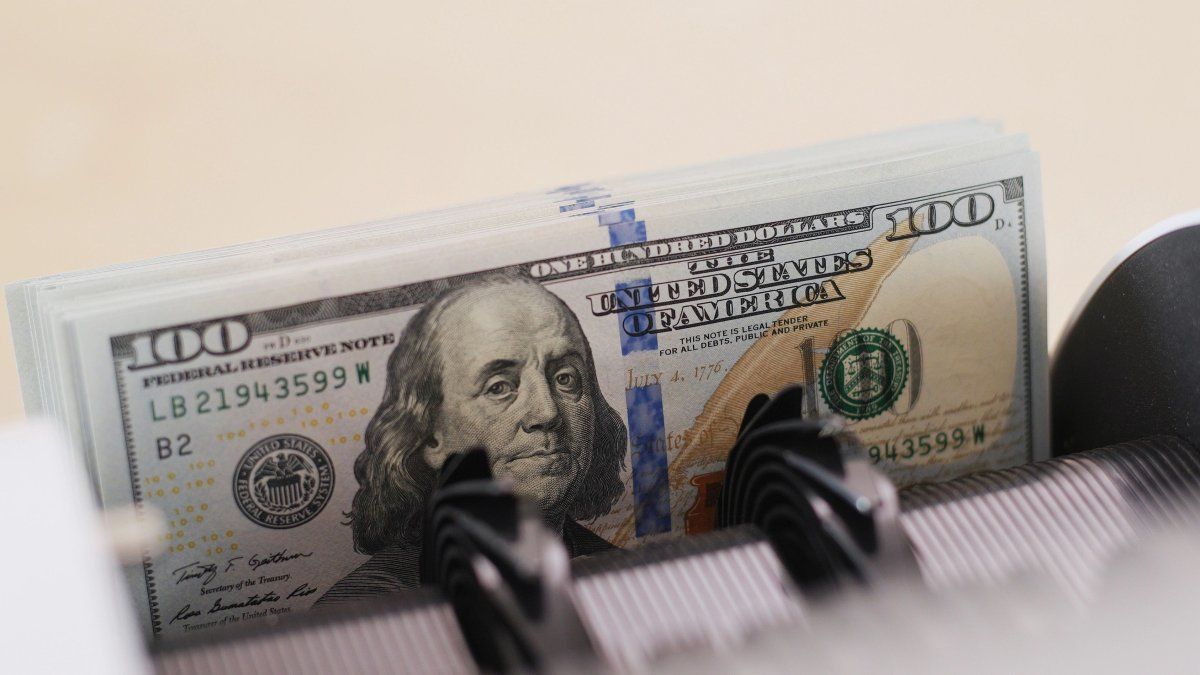His dark days and his arrival in Argentina
Before arriving in Argentina, Luca had a very bad time in Europe, after escaping from the Scottish Gordonstoun School in his last year (even Interpol was looking for him) his mother found him in Rome, addicted to heroin and in a very bad state emotional. Thanks to a doctor who declared him “insane” he did not do the Italian military service but he could not do much to get out of the hell he was in.
In fact, over time, things got worse with his sister’s suicide and he too nearly died from a heroin overdose; he fell into a coma. As fate would have it, the only friend he had ever made in Scotland, Timmy McKernwho had family in Argentina and had settled in the Cordoba mountains, where he formed a family that was his salvation.
Timmy sent Luca a letter with a photo of him with his wife and little daughter and the saws in the background. And he invited him to spend a season with them. Luca arrived in Argentina at the beginning of the 80s, escaping from his life in Europe and from heroin. And he stayed forever.
He learned to speak Spanish by listening to people, the radio and television thanks to his enormous ease of language (besides Italian and English, he also spoke French) and deepened his love for music.
Luca Prodan
Luca in the Cordoba mountains
life with sumo
In Córdoba he met German Daffunchio Already Alejandro Sokol. Before moving to the English neighborhood of Hurlingham, in Buenos Aires, and starting Sumo, he traveled to Europe for the last time to buy equipment and instruments.
With Prodan on vocals, Sokol on bass, Daffunchio on guitar and Stephanie Nuttalan English friend of Luca’s, on drums, gave their first concert at a nightclub in El Palomar called Caroline’s Pub.
The gang established its base in the house of Timmy’s mother in Hurlingham, Province of Buenos Aires. They offered shows with themes sung in English. They had serious problems during the Falklands war, when everything related to the United Kingdom — including language — was banned. This situation caused the return of Nuttal to his native country at the request of his parents.
Sumo’s second formation was made up of Prodan (vocals), Daffunchio (guitar), Sokol (drums) and Diego Arnedo (bass). He would later join as a saxophonist. Roberto Pettinatowho until then was a journalist for the magazine El Expreso Imaginario.
In 1984, Sokol left the band and joined Alberto “Superman” Troglio in the battery. Soon after, and invited by Diego Arnedo, he enters Ricardo Mollo on guitar. Both were former members of MAM. The formation with Prodan, Daffunchio, Arnedo, Mollo, Troglio and Pettinato was the one that was maintained until the dissolution of the group.
From revolution to death
after posting Bodices in the early morning in the form of a cassette and with limited distribution, in 1985 the band released their first “official” album, Divided by Happiness in which they capture a lot of reggae with influences from Bob Marley and also funk and post punk; “The dumb blonde” was the biggest hit from this album.
In 1986 they recorded arriving the monkeys, second album in which there is reggae, aggressive rock and post-punk. Some of his songs became hymns, such as “Bursting from the Ocean”, “The Armored Eye” either “Hot TV”however the hit of the album was “The Old Vinegars”. That same year they gave an epic concert at Obras Sanitarias, establishing themselves as one of the most attractive bands of that time.
In 1987 they released their third and last album, After Chabonan album in which a remarkable maturity in musical and lyrical matters is shown: such is the case of “Tomorrow in the Supply”in which Prodan gives a particular and emotional description of a typical Buenos Aires neighborhood and one of his most remembered songs “Crua Chan”.
Sumo

Prodan, Daffunchio, Arnedo, Mollo, Troglio and Pettinato was the most popular formation of Sumo
Luca set a trend with his musical style, with his imprint and with his image: in the context of the eighties, being a bald rocker was countercultural. Prodan was not weighed down by this situation and ended up setting a trend.
Hand in hand with success and exposure, his addiction to gin grew, which led to his death caused by cirrhosis of the liver as a result of his alcoholism at the age of 34. He was found dead in the pension where he spent his last days, around the Buenos Aires National School, on December 22, 1987. Undoubtedly, he lived a fast and sometimes extreme life, however, those pauses that account for the artist’s sensitivity are the ones that remain forever as an indelible mark on the popular culture of our country.
Source: Ambito
I am an author and journalist who has worked in the entertainment industry for over a decade. I currently work as a news editor at a major news website, and my focus is on covering the latest trends in entertainment. I also write occasional pieces for other outlets, and have authored two books about the entertainment industry.




